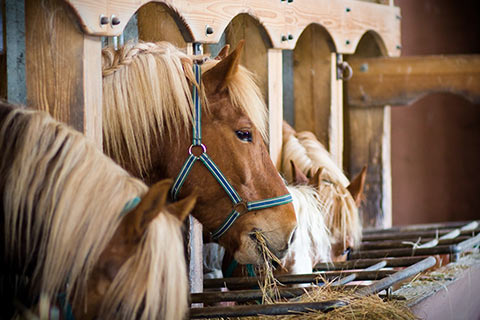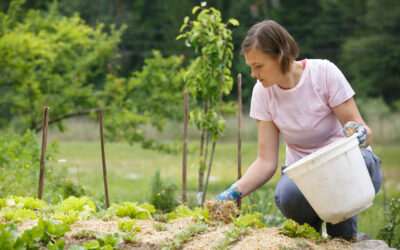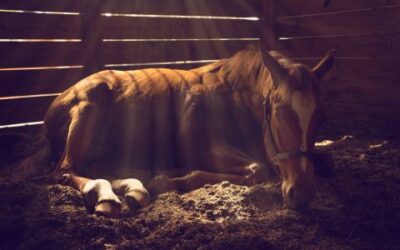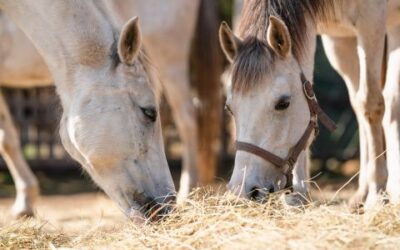For owners, providing an environment that values a horse’s natural tendency to graze is the standard. Mimicking a grazing environment, with plenty of busy chewing conducted over time, provides the horse with physical and psychological health benefits. Chopped hay that is natural, nutrient-rich, and supportive of a fiber-first diet is the best-case scenario for today’s horse, whether they are challenged by digestive issues, respiratory issues, or simply too much time in the stall.
We’ve put together a sizable — though not exhaustive — list on how owners can depend on chopped hay to fill the needs of most every horse.
The Advantages of Chopped Hay

Easy Chewing for Seniors
Adequate chewing is the first step in the digestive process, and hay chopped to the natural fiber length for easy chewing is an advantage for the senior horse. For older horses, it’s common to have teeth that are worn, molars that are “hooked,” or teeth that are “floating,” making chewing inefficient and painful, resulting in lost nutrients, loss of body condition, and weak bones. Older horses need highly digestible sources of protein and calcium to make up for these losses. Short chopped forage fills this need by making it easier to chew and digest than common long stem hay.
Nutrition
High quality forage is an ideal source of nutrients. Chopped forage contains energy that allows horses to exercise and maintain body weight while being an excellent choice for horses with metabolic issues. Look for blends that provide slow energy release, quality digestible forage, natural fiber, and necessary proteins. Chopped forage that undergoes a drying process will also provide the advantage of locking in nutrients lost during the traditional sun-curing process of drying hay.
Safe for Respiratory Issues
Chopped forage that undergoes a high temperature drying process is not just a first choice for its nutritional value. It also eliminates harmful mold spores that can lead to respiratory allergies including heaves. This provides horses with fiber without the risk of breathing in dust and mold spores that are common when feeding baled hay, for example.
Chopped for Easier Chewing
Lucerne Farms Hi Fiber Forage is targeted at the older horse or those with maintenance needs. It is a blend of timothy, oat, and alfalfa hay chopped short for easier chewing and digestibility and mixed with a little molasses to make it tasty and low fat — the perfect grain supplement, hay replacement, or fiber supplement.
Advantage Over Pellets
Chopped forage has an advantage over pelleted or extruded complete feeds that attempt to solve chewing needs without addressing the need for the horse to also digest and absorb these feeds. Chopped forage allows the horse to chew and digest effectively.
Consistency
When hay is chopped and bagged from a trusted supplier, you can be certain your horse is getting consistent nutrition. Look for a guaranteed analysis which provides a nutritional breakdown of the forage on each individual bag. That will ensure your horse is meeting his daily forage requirements.
A Complete Ration
Bagged, chopped forage can replace all of your horse’s hay, if necessary. When traditional hay is not an option, look for a quality forage that provides a natural alternative.
An Important Supplement
Grain is a convenience, but it must be supplemented to mimic a more natural diet. It takes a horse much longer to chew fiber, so mixing chopped forage in with your horse’s grain ration will help your horse chew more, create more saliva, and aid in the digestion of the grain.
Cost Effective Feeding
Chopped hay can be fed in a bucket, corner feeder or outside in a feed trough — easier than feeding baled hay. There’s little to no waste, it’s tasty and easily chewed, and it’s available during times of drought and hay scarcity.




